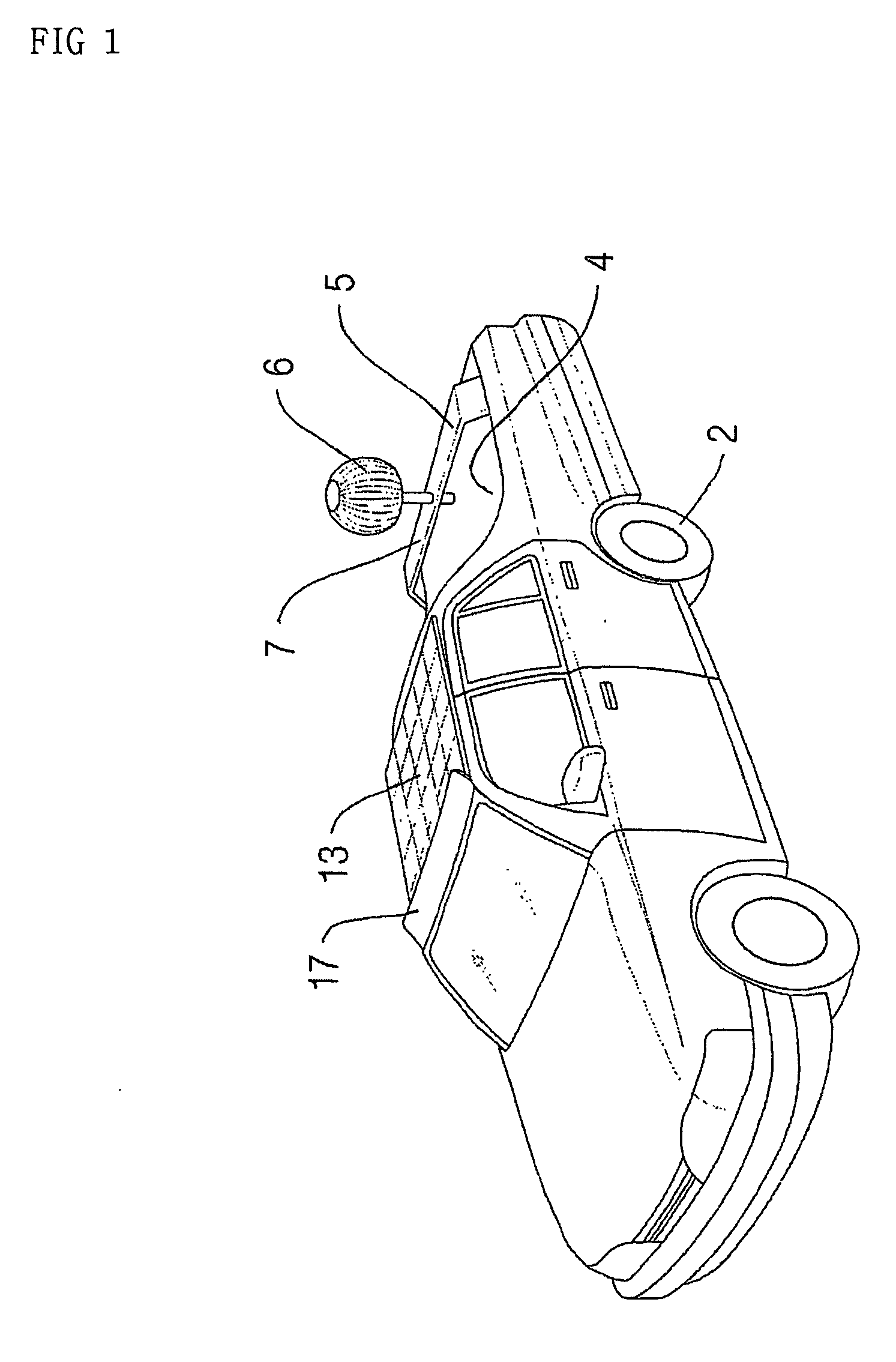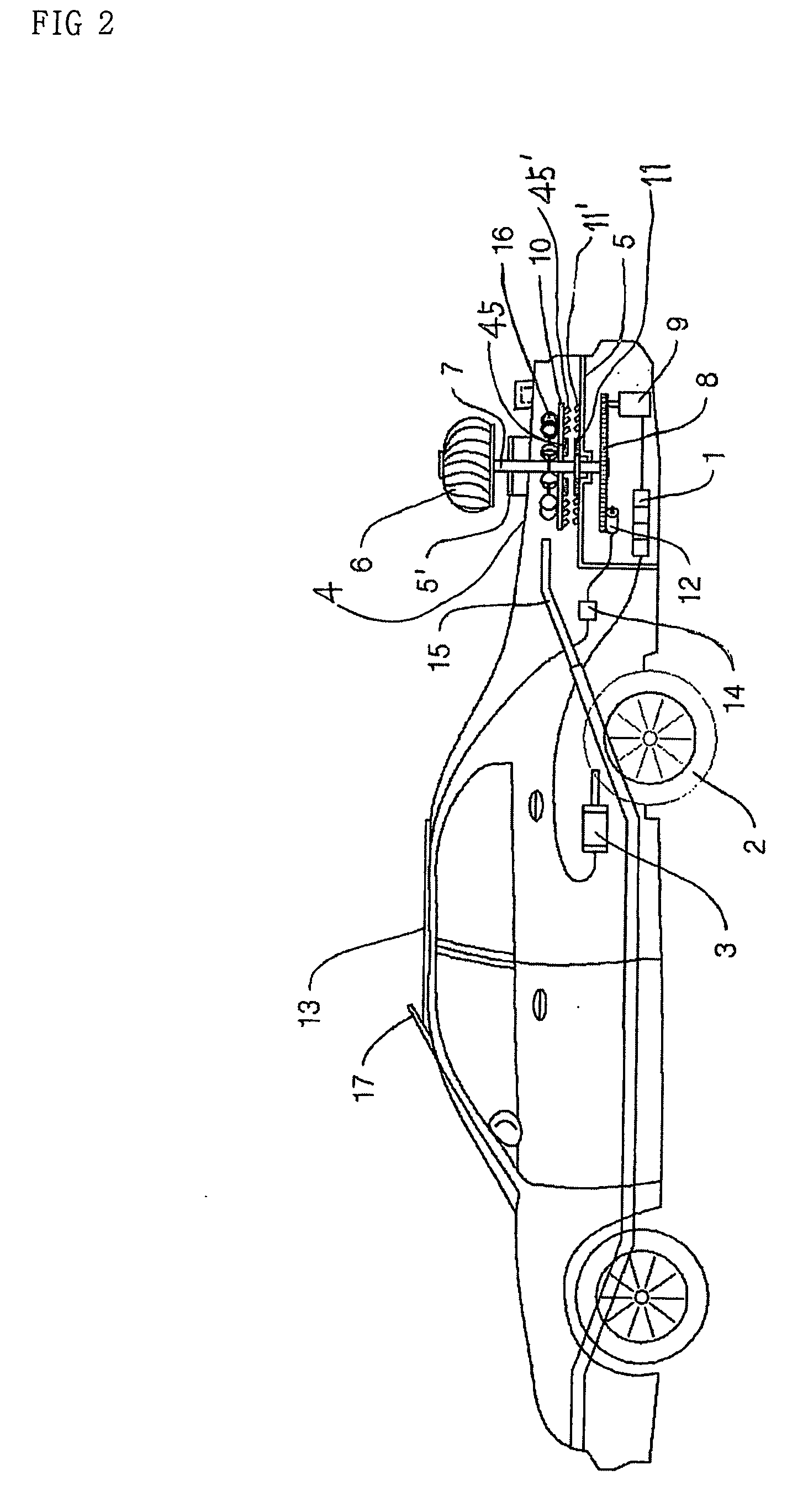Vehicle using wind force
a technology of wind power and vehicle, applied in the direction of wind power motors with solar radiation, machines/engines, light oil conversion, etc., can solve the problems of increasing the consumption of fuels such as gasoline, light oil, lpg or the like, and the price of petroleum fuels will soar, so as to increase the amount of electric power, and rotate smoothly
- Summary
- Abstract
- Description
- Claims
- Application Information
AI Technical Summary
Benefits of technology
Problems solved by technology
Method used
Image
Examples
first embodiment
[0021] Referring to FIG. 1 and FIG. 2, a driving motor 3 is electrically connected to a battery 1 and connected to a driving wheel 2. The driving motor 3 transfers rotary force of the driving wheel 2 to the driving wheel 2. In this case, the rear of a vehicle provided with the driving motor 3 is formed lower than its front in a streamline shape so that wind can move toward the rear of the vehicle on wind.
[0022] Supports 5 and 5′ are each disposed in and out of a trunk lead 4 of the vehicle. A spherical ventilator 6 is formed in the outside support 5′, so that ventilator 6 is rotated by wind. A disk type plate type gear 8 is fixed to the bottom of a shaft 7 connected to the ventilator 6. In the above, the gear 8 is engaged with the shaft of an electric generator 9, so that electricity generated therefrom is charged to the battery 1. A disk type plate 10 is fixed on the shaft 7. Pairs of permanent magnets 11, 11′, 45 and 45′ are each formed on the opposite side of each of the inside ...
second embodiment
[0036] Meanwhile, in addition to the wind force power system formed in the truck lead 4 in the rear of the vehicle as described above, a wind force power system 20 is added to the hood panel at the front of the vehicle in order to double the generating power, as shown in FIG. 3 and FIG. 4.
[0037] In other words, an intercooler 112 is formed at the hood panel in the rear of the vehicle. The wind force power system 20 is formed within the intercooler 112, i.e., the hood panel.
[0038] The wind force power system 20 includes a ventilator 22 for rotating the air introduced through the intercooler 112 formed at the hood panel in the front of the vehicle, a rotary gear 32 connected to the ventilator 22 and the shaft 24, a follower gear 36 engaged with the rotary gear 32 to cooperatively operate with the gear 32, and an electric generator 34 connected to the follower gear 36.
[0039] Meanwhile, a disk type plate 25 cooperatively operated with the shaft 24 is disposed in the center of the sha...
PUM
 Login to View More
Login to View More Abstract
Description
Claims
Application Information
 Login to View More
Login to View More - R&D
- Intellectual Property
- Life Sciences
- Materials
- Tech Scout
- Unparalleled Data Quality
- Higher Quality Content
- 60% Fewer Hallucinations
Browse by: Latest US Patents, China's latest patents, Technical Efficacy Thesaurus, Application Domain, Technology Topic, Popular Technical Reports.
© 2025 PatSnap. All rights reserved.Legal|Privacy policy|Modern Slavery Act Transparency Statement|Sitemap|About US| Contact US: help@patsnap.com



